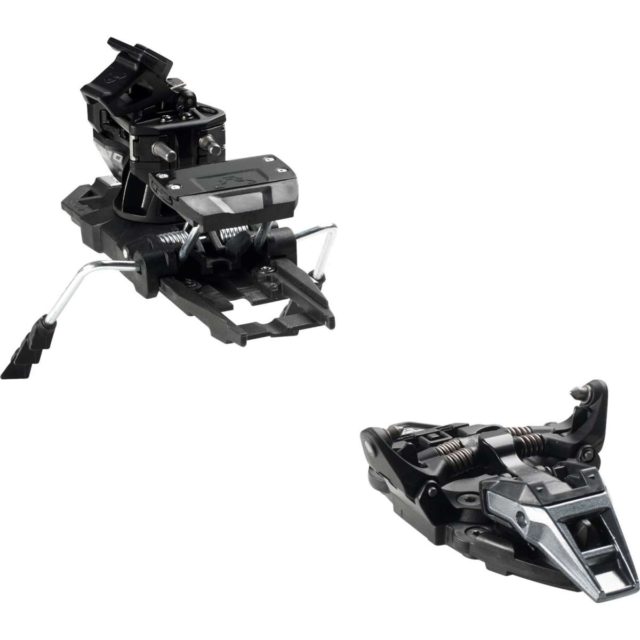
2020-2021 Dynafit ST Rotation 10 Binding
Release Value Range: 4-10
Available Brake Widths: 90, 105, 120, 135 mm
Climbing Aids: Flat, Low, & High
Forward Pressure: 10 mm
BSL Adjustment: 45 mm (22.5 mm forward and back)
Stated Weight: 599 grams (with 105 mm brakes)
Blister’s Measured Weight (including screws):
- Toe pieces: 207 & 208 grams
- Heel pieces w/ 105 mm brakes: 419 & 419 grams
- Total Weight per Binding (with 105 mm brakes): 626 & 627 grams
MSRP: $599.99 USD
Boots Used: Salomon QST Pro 130, Scott Cosmos III, & Nordica Strider 120
Skis Used: Atomic Backland FR 109
Test Locations: Telluride Ski Resort, Cameron Pass, & Rocky Mountain National Park, CO; Rogers Pass, BC
Days Tested: ~15
[Note: Our review was conducted on the 18/19 ST Rotation 10, which was not changed for 19/20 or 20/21.]
Intro
Not too long ago, the Dynafit Radical was one of the very few tech bindings designed for aggressive skiing in the backcountry. Then Dynafit introduced the Radical 2.0, which represented a nice upgrade from the first version.
This year, Dynafit introduced the newest evolution of the Radical line — the ST Rotation 10. And while it no longer shares the Radical name, the ST Rotation 10 does share a very similar construction.
With a redesigned toe piece intended to make the binding a bit more user-friendly, the ST Rotation 10 enters a pretty stacked category of touring bindings designed to let people ski hard in the backcountry without lugging around a ton of weight.
I’ve spent much of this winter touring on the ST Rotation 10 to see how it compares to its predecessor, the Radical 2.0 ST, as well as some of the other options currently on the market.
Here’s what Dynafit says about the ST Rotation 10:
“The ST Rotation 10 Ski Touring Binding is the evolution of the Radical ST 2.0 Binding. It offers the largest possible entry comfort with its new, integrated centering system. The pivoting toe piece avoids unintended releases, guaranteeing you TÜV-certified safety. This pin binding offers 22.5mm of flex in the length adjustment in both directions and can be set for a release value ranging from 4-10. A forward pressure of 10mm ensures that the release value remains constant even upon deflection of the skis.”
Deep Dive Comparisons
Become a Blister Member or Deep Dive subscriber to check out our AT Binding Deep Dive where we directly compare the ST Rotation 10, Fritschi Vipec Evo 12, Fritschi Tecton 12, G3 ION 12, Salomon / Atomic Shift MNC 13, Marker Kingpin, Marker Duke PT, & CAST Freetour, and discuss what you tend to gain and give up by going to much lighter AT bindings.
Availability and Models
Since the naming scheme and availability of the Rotation and Radical series can be a bit confusing, let’s sort this out right away:
Dynafit is currently selling the Radical FT 2.0 (release values of 5-12); Radical ST 2.0 (release values of 4-10); and ST Rotation 10 (release values of 4-10).
For 18/19, they will no longer be making the Radical 2.0 FT.
Dynafit will still be selling the Radical ST 2.0 and ST Rotation 10, and are introducing the FT Rotation 12, which — you guessed it — will have a maximum release setting of 12.
Design
In terms of design, the ST Rotation 10 is nearly identical to the Radical 2.0, with two important exceptions.
First and foremost, the ST Rotation 10 features a ball bearing detent that helps the pivoting toe piece align when stepping into the binding.
We’ll get to the ball bearing soon, but first a little backstory on why Dynafit decided to add it. One of the most innovative parts about the Radical 2.0 is its rotating toe piece. The toe piece sits on a turntable that allows it to pivot left and right, which Dynafit says helps avoid the dreaded pre-releases often associated with older tech bindings.
While that’s great for the downhill, the rotating toe piece caused some difficulties on the up. When stepping into the Radical 2.0 for ski mode, you had to make sure the toe was straight in order to get the heel pins to match up with the slots in your boot when you stepped down. You also had to straighten the toe when trying to lock it out for touring. While this became easier with practice, it could be quite frustrating during transitions.
With the ST Rotation 10, Dynafit hoped to address this by adding a ball bearing detent that pops out when the toe piece is straight and provides a bit of resistance for further rotation.
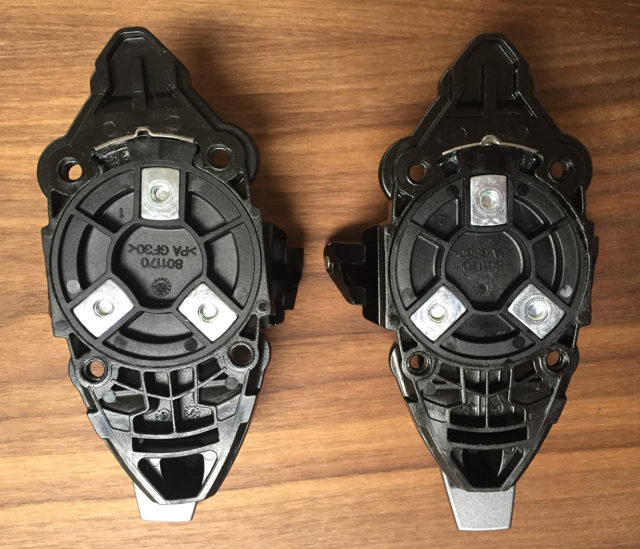
Overall, the new toe piece is definitely easier to step into. On the pair of ST Rotation 10’s I tested, the toe piece actually feels like it pivots a bit easier than my pair of Radical 2.0’s (i.e. there’s less friction), but that could just be due to the fact that the Radical 2.0’s are much older than the ST Rotation 10’s. But despite the decreased friction, I’ve found it significantly easier to align the toe piece of the ST Rotation 10 than the Radical 2.0. I can feel the ball bearing click into the slot, and once it’s centered, it stays centered better than the Radical 2.0.
It still sometimes takes me a few seconds to align the toe piece, but I think the toe of the ST Rotation 10 is definitely more user-friendly than the toe on the Radical 2.0.
Other than the ball bearing, the other difference between the Radical 2.0 and ST Rotation 10 lies in the toe piece wing arms. The ST Rotation 10 toe piece uses aluminum wing arms, while the Radical 2.0 has steel arms. This is the main reason behind the slight drop in weight from the Radical 2.0 to the ST Rotation 10.
Weight & Comparisons
Thanks to the lighter toe wings, the ST Rotation 10 falls on the lighter end of bindings in this category, though the difference isn’t huge.
For reference, here are a few of our measured weights (per binding in grams) for many of the ST Rotation 10’s competitors:
595 & 595 Fritschi Vipec Evo 12 (110 mm brakes)
626 & 627 Dynafit ST Rotation 10 (105 mm brakes)
636 & 641 G3 Ion 12 (105 mm brakes)
652 & 653 Dynafit Radical 2.0 FT (105 mm brakes)
683 & 681 Fritschi Tecton 12 (120 mm brakes)
774 & 775 Marker Kingpin 13 (75-100 mm brakes)
Touring
Like all tech bindings I’ve used, the ST Rotation 10 feels great on the skintrack compared to any frame binding.
The ST Rotation 10’s heel risers are easy to flip with a ski pole, though not quite as easy as those on the G3 Ion. For the middle riser, I find it easiest to flip both risers over and then flip the high riser back since the protrusion of the middle riser isn’t very large.
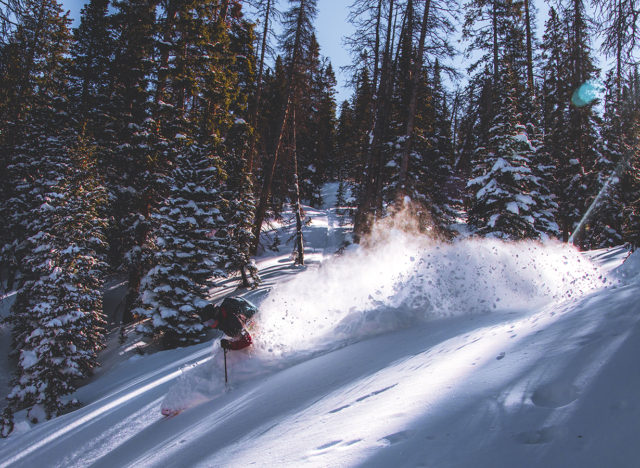
I’ve found transitions on the ST Rotation 10 to be very easy (and I’m sure my time on the Radical 2.0 helped with this, since the transition steps are identical). I’ve also found it easier to step into the ST Rotation 10 compared to the Fritschi Tecton and Vipec Evo as the Fritschi toe’s often snap closed before my boot is properly lined up.
It’s fairly easy to turn the heel of the ST Rotation 10 from walk to ski mode with a ski pole, and I pretty much always use a pole for this since the heel piece snaps into ski mode fairly aggressively, and I’ve actually gotten a few cuts from flipping it with my hand. So yeah, I’d definitely suggest switching it with a pole, or use thick gloves.
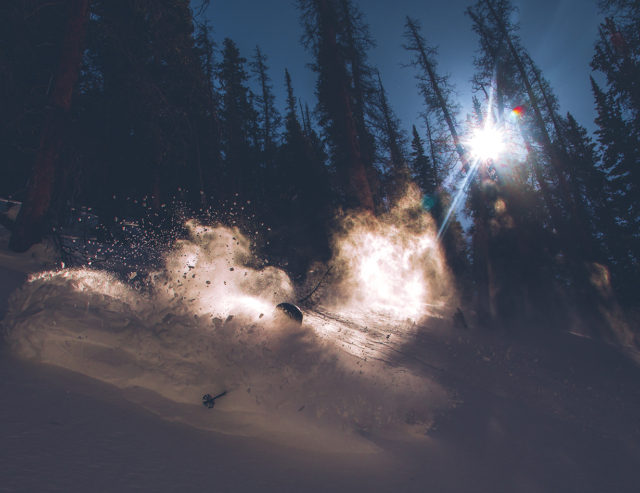
After about 15 days in the ST Rotation 10 — and probably around 50 or so in the Radical 2.0 — I haven’t had any major issues with icing or had the brakes pop out while in walk mode.
Overall, if you’re coming from a frame binding, I’m sure you’ll be a lot happier on the up with the ST Rotation 10. And compared to other tech bindings, I’ve found the ST Rotation 10 very intuitive and reliable while touring.
Downhill Performance
Of course, the real reason most of us go touring is for the fun on the way down (except for some of my more masochistic friends that make me seriously question my personal level of fitness).
But for most people, touring is about the skiing. And if a binding sucks to ski, well, it’s not really doing its job.
Since the updates to the toe don’t really affect downhill performance, it’s not surprising that the ST Rotation 10 feels identical to the Radical 2.0 on the way down. And if you haven’t already, you should definitely check out David’s review of the Radical 2.0, since most of his remarks about its downhill performance will hold true for the ST Rotation 10.
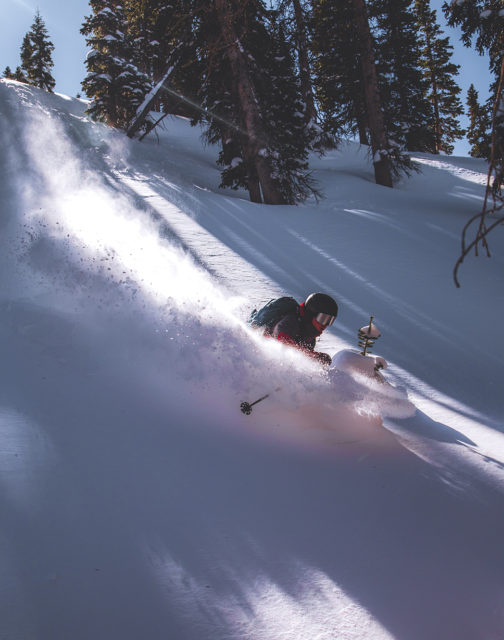
The main caveat with this is that David reviewed the Radical FT 2.0, which has a release value range of 5-12, while the ST Rotation 10 I’ve been using has a release value range of 4-10. Next year, the FT Rotation 12 will replace the Radical FT 2.0.
The ST Rotation 10 is not the most powerful or confidence-inspiring touring binding out there. But in fairly forgiving conditions, I’ve found the ST Rotation 10 to be just fine.
On very firm snow, I’d definitely prefer the better power transfer and suspension of the Fritschi Tecton 12, Marker Kingpin, or Salomon / Atomic SHIFT binding. Like the Radical 2.0, the ST Rotation 10 feels pretty harsh when trying to ski fast on firm snow, and while I haven’t pre-released on the ST Rotation 10, I have a few times on the Radical 2.0. (All of these pre-releases were while skiing very firm, pretty rough snow in the resort at speed — something I wouldn’t recommend on most touring bindings).
But since I’m almost always touring for soft snow, I’ve been pretty happy with the ST Rotation 10 as a general touring binding. During my 15 or so days on it, the ST Rotation 10 has kept me in when I wanted them to, and have also released when I wanted them to.
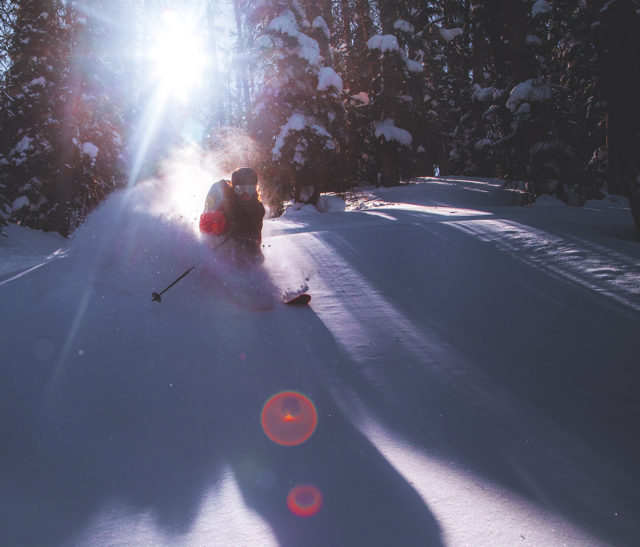
If you’re looking for a binding that you can ski as hard as you do in the resort and do so in all conditions, the ST Rotation 10 would not be my first recommendation. But if you mostly tour for soft snow, I think the ST Rotation 10 is a fine option.
Who’s It For?
The ST Rotation 10 is not the most powerful touring binding, and it’s also not the lightest. However, one very important factor when choosing a touring binding is familiarity and ease of use. I recently started getting time on the Fritschi Tecton, and I’ve been surprised by how much I actually missed the ST Rotation 10 because I’ve become so used to how it tours and transitions. So, if you get along well with the Radical 2.0, the ST Rotation 10 makes sense as a replacement since it works just like the Radical 2.0 but makes stepping in a bit easier and is slightly lighter.
Bottom Line
The Dynafit ST Rotation 10 is a very logical upgrade from the Radical 2.0. It’s a bit easier to use, and I’ve found it adequate for most of my touring days. No, it’s not the best binding for charging in difficult conditions, but if you mostly tour to get to untracked soft snow and / or ski somewhat conservatively in the backcountry, it’s a pretty good option, especially if you’ve liked the Radical 2.0.
Deep Dive Comparisons
Become a Blister Member or Deep Dive subscriber to check out our AT Binding Deep Dive where we directly compare the ST Rotation 10, Fritschi Vipec Evo 12, Fritschi Tecton 12, G3 ION 12, Salomon / Atomic Shift MNC 13, Marker Kingpin, Marker Duke PT, & CAST Freetour, and discuss what you tend to gain and give up by going to much lighter AT bindings.

Hi Luke!
How does the Dynafit ST Rotation 10 compare to the new(2020) Dynafit ST Radical? Did you have the chance to take a look at the new ST Radical? I can’t find any difference between the two models beside the TUV certification.
Thanks!
We haven’t had a chance to check out the new ST Radical, but to me it seems like the main difference is in the toe — the Rotation has the rotating toe piece, while the Radical does not. In theory, that should make the Rotation a bit more reliable in terms of release (and potentially safer in some scenarios), while the Radical is a bit lighter and probably slightly easier to step into.
Your Vipec weights are listed incorrectly it’s approx 630 grams with brakes.
We weighed multiple pairs of the Vipec EVO 12 and our average weight per binding was 595 grams with the 110 mm brake. Did you weigh them recently and get that higher 630 g weight?
Hi~ Do you know if the LOOK Rotation 12 is the same as the Dynafit Radical or the Dynafit Rotation?
https://www.look-bindings.com/en-us/product/hm-rotation-12-d105
Good question — the Look Rotation bindings are functionally identical to the Dynafit Rotation bindings.
The marketing around the new 2020 ST Radical says it’s a “resurrection of our first Radical ST. Now in different colors and significantly lighter than ever.” So it seems like it may also differ from the ST Rotation 10 / Radical 2.0 by having the heel spring removed (discussed in David’s review)? I find Dynafit’s marketing rather confusing to say the least.
I have the ST Rotation 7 and find it extremely difficult to rotate. Even my husband finds it difficult. Is this usual? I want to know if this is typical or if I have a dud pair.
Hmm, that does seem odd. They’re not the easiest bindings to turn, but they shouldn’t be super difficult. Before taking it back to the shop, it might be worth just trying to repeatedly turn it and see if it gets easier with more use.
Hi Luke, I have the Dynafit Rotation Bindings. I love everything about them, except for some reason when I’m in “walk” mode the toe piece keeps clicking down into “ski” mode. I can’t get it to stay in “walk” mode. this is especially true early in a climb, it seems to get better later in a climb. Does the binding need to be adjusted or am I doing something wrong?
I have similar experience with what Scott Schoenherr just described. The other day on the approach along the fire road with almost no incline one of the bindings disengaged 4 times within an hour. I am wondering if this is a bad batch or Dynafit did something to the previous year’s version (except for re-painting the toe piece). I have another pair of skis with 2019 Rotation 10, and it works fine.
Dang, I never had this issue with our pair, but maybe there was a batch where the tolerances weren’t as tight with the toe lever. As far as we know, the only difference between the first Rotations produced and the current models is graphics.
I have the same problem with one of my toe bindings- it will stay in walk mode at all. Were you able to resolve the problem?